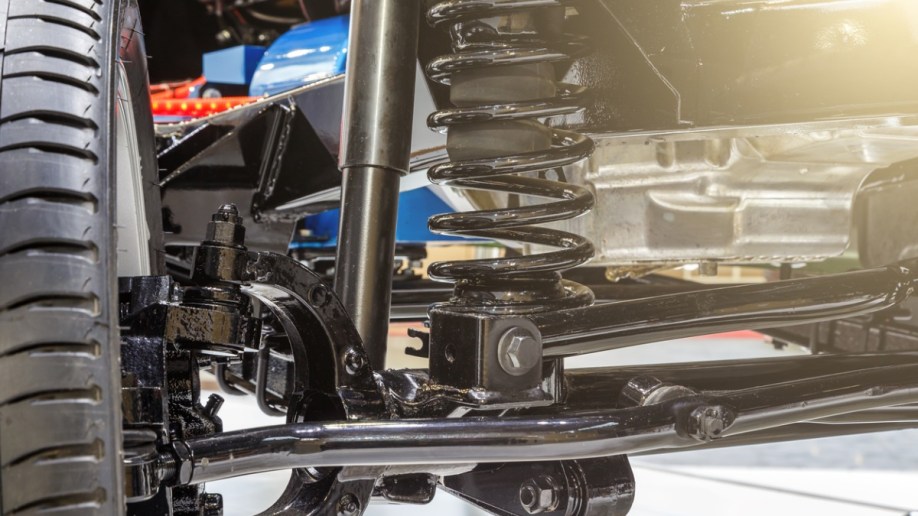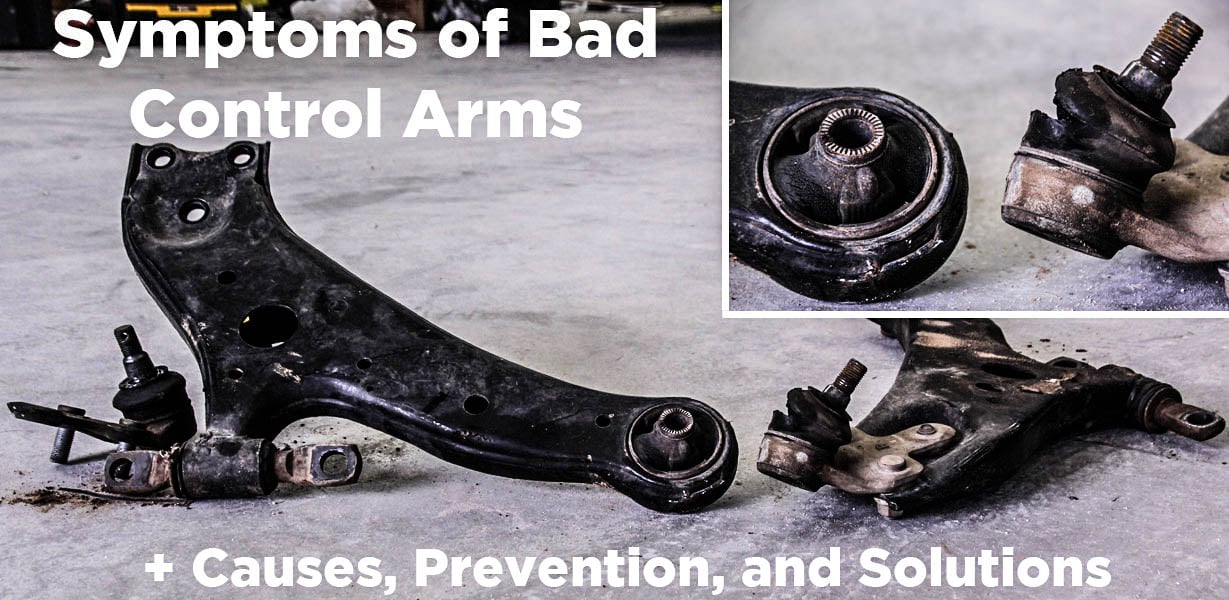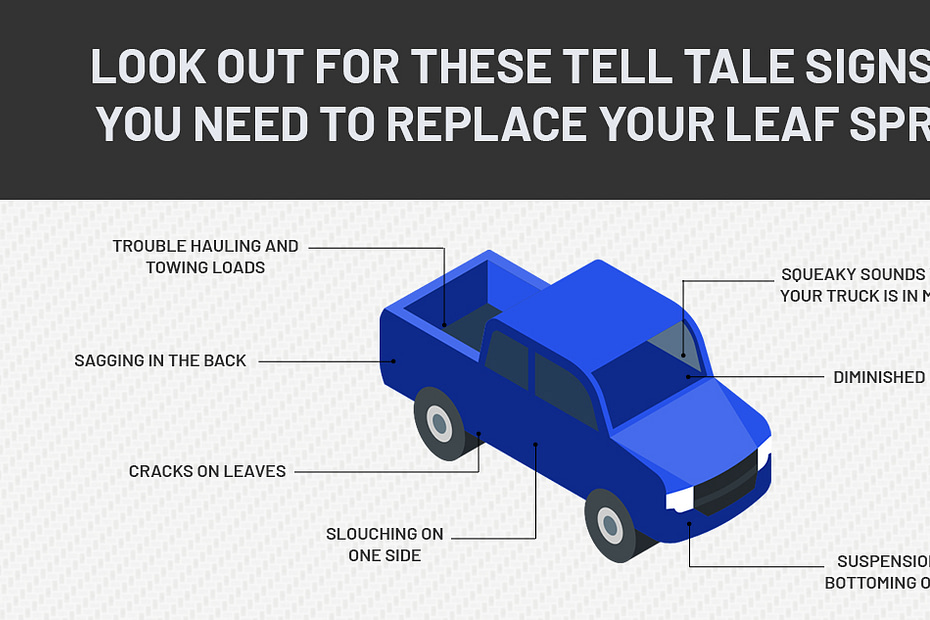To tell if a suspension is bad, you can look for signs such as excessive bouncing, uneven tire wear, drifting or pulling while driving, and a bumpy or uncomfortable ride. Signs of a bad suspension can indicate worn-out or damaged components that need to be repaired or replaced.

Credit: www.kbb.com
Common Signs Of Bad Suspension
When it comes to the overall performance and safety of your vehicle, a well-functioning suspension system is crucial. It not only helps you maintain control while driving but also ensures a smooth and comfortable ride.
Uneven Tire Wear
One of the most common signs of bad suspension is uneven tire wear. When your suspension system is not working properly, it can cause uneven distribution of weight on your tires. As a result, certain areas of your tires may wear out faster than others. This can be observed through visible signs such as bald spots, excessive wear on the inner or outer edges, or cupping on the tread.
Excessive Bouncing
Excessive bouncing is another telltale sign of bad suspension. When your vehicle’s suspension is worn out or damaged, it loses its ability to absorb shocks and bumps effectively. As a result, you may experience a bumpy ride and excessive bouncing, especially when going over uneven roads or speed bumps. This can not only be uncomfortable but also potentially dangerous, as it affects your ability to maintain control of the vehicle.
Strange Noises
In addition to uneven tire wear and excessive bouncing, a bad suspension system can also manifest through strange noises coming from your vehicle. If you hear clunking, knocking, or squeaking sounds while driving, especially when going over bumps or making turns, it’s a clear indication that something is wrong with your suspension. These noises are often a result of worn-out components or loose parts within the suspension system.
Poor Handling And Stability
A well-functioning suspension system plays a significant role in the overall handling and stability of your vehicle. However, if you notice a decrease in the handling and stability of your vehicle, it could be a sign of a bad suspension system. You may experience difficulty in steering, especially around corners, or a general lack of control while driving. This can be dangerous, as it affects your ability to navigate safely and increases the risk of accidents.
Visibly Damaged Suspension Components
Lastly, visually inspect your suspension components for any signs of damage. Check for visibly damaged suspension components such as leaking shock absorbers, broken springs, or bent control arms. These visible damages indicate a serious problem with your suspension system and should be addressed immediately.
In conclusion, keeping an eye out for these common signs of bad suspension can help you identify any potential issues early on. If you notice any of these signs, it’s essential to have your suspension system inspected and repaired by a professional to ensure your safety and maintain the overall performance of your vehicle.
Effects On Car Handling
A bad suspension can have a significant impact on car handling. Signs of a bad suspension include uneven tire wear, excessive bouncing, and difficulty steering or controlling the vehicle. If you notice any of these issues, it’s important to get your suspension inspected and repaired by a professional mechanic.
Pulling Or Drifting
When it comes to the effects of bad suspension on car handling, one of the clearest signs is when your vehicle constantly pulls or drifts to one side while driving. This can be attributed to worn-out or damaged suspension components that are no longer keeping the car balanced and aligned. Pulling or drifting can make it difficult to keep your car in a straight line, leading to an unstable and potentially dangerous driving experience. It’s important to address this issue promptly to avoid further damage to the suspension system and to ensure your safety on the road.Difficulty Steering
Another indication that your suspension is in dire need of attention is difficulty steering your car. When your suspension is compromised, you may struggle to control the direction of your vehicle, especially when turning or navigating corners. Steering may feel stiff, and the car may respond sluggishly or unpredictably to your inputs. This lack of responsiveness can be alarming and greatly affect your ability to maneuver safely on the road. If you notice any difficulties in steering, it’s crucial to have your suspension inspected and repaired to restore optimal handling and control. Now that we’ve explored the effects of bad suspension on car handling, let’s delve into two specific signs you should look out for: pulling or drifting and difficulty steering.Identifying Suspension Issues
If you notice uneven tire wear, bouncy rides, or difficulty steering, these may be signs of bad suspension. Pay attention to these indicators to identify suspension issues in your vehicle.
Identifying Suspension Issues When it comes to vehicle safety, the condition of your car’s suspension plays a crucial role. If you notice any signs of a bad suspension, it’s essential to address the issue promptly. Here’s how to identify potential suspension problems. H3 heading: Visual Inspection Visual Inspection – Look for uneven tire wear, which can indicate suspension issues. – Check for leaking shock absorbers or struts. – Examine the condition of the springs for signs of wear or sagging. – Inspect the vehicle for any noticeable signs of damage to the suspension components, such as bent or broken parts. H3 heading: Test Drive Evaluation Test Drive Evaluation – Pay attention to any unusual noises when driving over bumps or rough roads. – Notice if the vehicle dips or sways excessively when braking or taking corners. – Feel for a bumpy or rough ride, which could indicate worn-out shocks or struts. – Observe how the car responds to steering inputs, as poor handling may point to suspension issues. By conducting a visual inspection and a thorough test drive evaluation, you can effectively identify potential problems with your vehicle’s suspension. Addressing these issues promptly can help ensure a safe and smooth driving experience.Common Suspension Problems
Identifying bad suspension is crucial for your vehicle’s safety and performance. Here are some common issues:
Worn Out Shocks
Shocks support your vehicle’s weight and provide a smooth ride. Signs of worn shocks include:
- Excessive bouncing or swaying
- Uneven tire wear
- Leaking fluid
Damaged Bushings
Bushings are rubber or polyurethane parts that isolate vibrations. Signs of damaged bushings are:
- Clunking or knocking noises
- Steering wheel vibration
- Uneven tire wear
Solutions For Bad Suspension
Discover effective solutions for bad suspension to ensure optimal vehicle performance.
Replacing Shocks And Struts
Opt for professional replacement of worn-out shocks and struts to enhance the smoothness of your ride.
Repairing Or Replacing Bushings
Consider repairing or replacing bushings to address suspension issues and improve overall stability.

Credit: www.suspension.com

Credit: www.captoyota.com
Frequently Asked Questions On How To Tell If Suspension Is Bad
How Do You Test For Bad Suspension?
To test for bad suspension, you can perform a bounce test by pushing on each corner of the vehicle and observing excessive bouncing or uneven movement. Additionally, listen for unusual noises while driving over bumps or dips in the road.
Uneven tire wear or a tilted vehicle stance can also indicate suspension issues.
What Are The Symptoms Of A Bad Suspension?
A bad suspension may cause a bumpy ride, uneven tire wear, leaning or drifting while turning, or a nose dive during braking. You may also notice unusual noises, such as clunking or squeaking, and fluid leaks. These symptoms indicate a potential issue with your car’s suspension system.
How Do You Check If Your Suspension Is Ok?
To check if your suspension is OK, visually inspect for any leaking fluid or damaged components. Test by pushing down on each corner of the car and seeing if it bounces back smoothly. Listen for any unusual noises while driving over bumps.
How Do I Know If I Need To Replace My Suspension?
To know if you need to replace your suspension, watch for signs like unusual noises, rough rides, or uneven tire wear.
Conclusion
It’s crucial to pay attention to warning signs of bad suspension. Regular maintenance can prevent costly repairs and keep you safe on the road. By being aware of common symptoms, you can act quickly to address any issues. Don’t ignore the signs – take action to ensure a smooth and safe driving experience.
